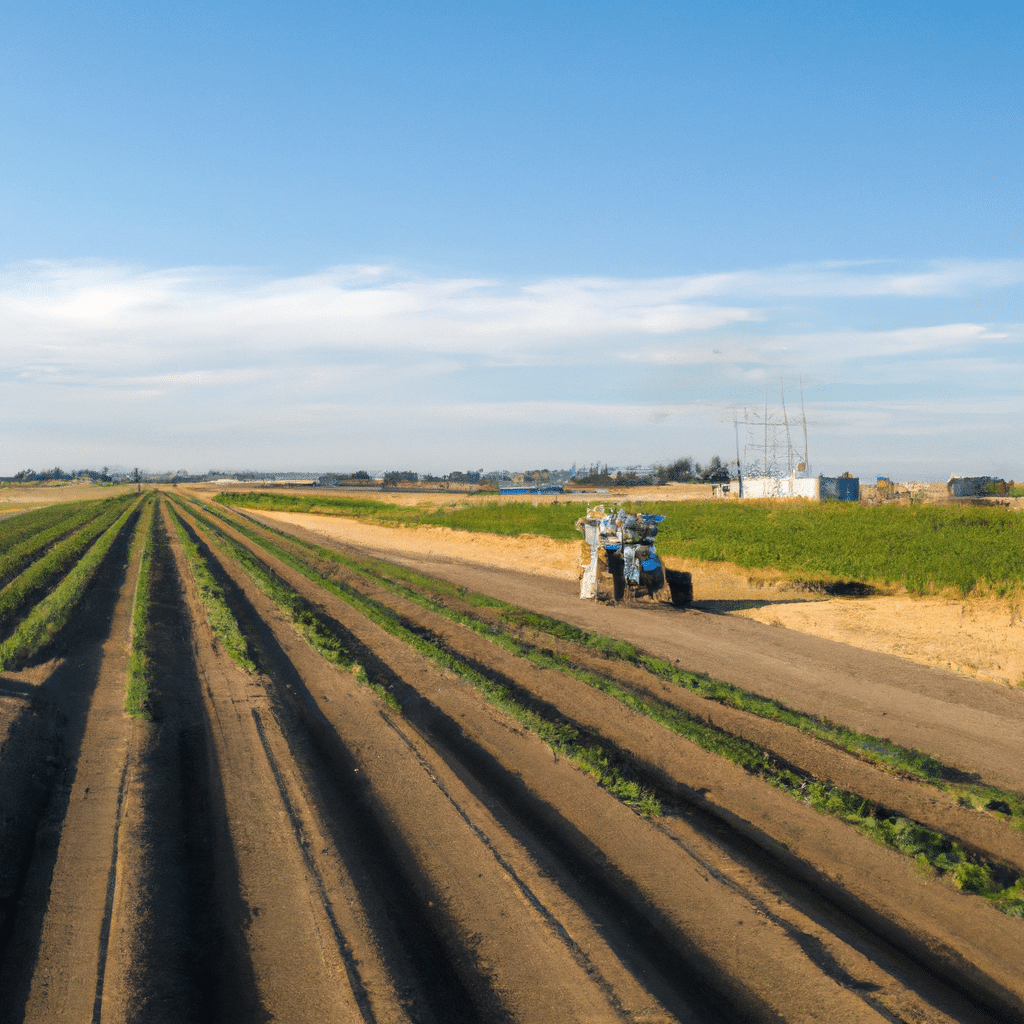Welcome to our comprehensive guide on unconventional, eco-friendly farming techniques that have the potential to supercharge crop yields. In this article, we will delve into innovative methods that go beyond traditional farming practices, offering sustainable solutions to enhance agricultural productivity. By incorporating these techniques into your farming practices, you can not only boost yields but also contribute to a healthier environment. So, let’s explore these groundbreaking approaches and discover how they can revolutionize modern agriculture.

1. Regenerative Agriculture: Restoring Soil Health for Increased Yields
Regenerative agriculture is a holistic approach that aims to restore and enhance soil health, thereby improving crop yields. By focusing on practices such as cover cropping, crop rotation, and minimal tillage, this technique promotes biodiversity and increases organic matter in the soil. These methods help retain moisture, prevent erosion, and reduce the need for synthetic fertilizers and pesticides. Implementing regenerative agriculture practices can lead to healthier soils, stronger crops, and ultimately, higher yields.
2. Aquaponics: A Sustainable Method of Cultivating Crops and Fish
Aquaponics is a unique farming technique that combines aquaculture (fish farming) with hydroponics (growing plants in water). This symbiotic system creates a closed-loop ecosystem where fish waste provides nutrients for the plants, while the plants filter and purify the water for the fish. By utilizing this method, farmers can optimize space, conserve water, and harvest both fish and crops simultaneously. Aquaponics offers a sustainable and efficient way to produce abundant yields while minimizing environmental impact.
3. Vertical Farming: Maximizing Space and Yield Potential
Vertical farming is a cutting-edge technique that involves growing crops in vertically stacked layers, often in controlled indoor environments. By utilizing advanced technologies such as LED lighting, hydroponics, and climate control systems, vertical farming allows for year-round production in urban areas with limited space. The controlled environment ensures optimal growing conditions, resulting in faster growth rates, reduced water usage, and protection against pests and diseases. With its ability to stack multiple layers of crops, vertical farming maximizes the yield potential per square foot of land.
4. Precision Agriculture: Harnessing Technology for Enhanced Efficiency
Precision agriculture leverages modern technology, including GPS, sensors, and drones, to optimize farming practices. By collecting real-time data on soil conditions, moisture levels, and crop health, farmers can make informed decisions regarding irrigation, fertilization, and pest control. This data-driven approach minimizes resource wastage, maximizes crop yield, and reduces environmental impact. Through precise monitoring and targeted interventions, precision agriculture ensures that every aspect of farming is optimized for efficiency.
5. Agroforestry: The Synergy of Trees and Crops
Agroforestry is an ancient practice that involves integrating trees with crops or livestock in a mutually beneficial manner. By strategically planting trees alongside crops, farmers can create microclimates that enhance soil fertility, regulate temperature, and provide natural windbreaks. The trees also contribute to the overall biodiversity of the ecosystem, attracting beneficial insects and wildlife. This synergistic approach not only improves crop yields but also helps mitigate climate change by sequestering carbon dioxide.
6. Biochar: Unlocking the Power of Carbon-Rich Soil Amendments
Biochar is a charcoal-like substance produced by heating organic waste materials in a low-oxygen environment. When added to the soil, biochar improves its structure, water-holding capacity, and nutrient retention. This results in healthier plants with enhanced root development and improved resistance to drought and disease. Additionally, biochar acts as a long-term carbon sink, sequestering carbon dioxide and mitigating climate change. By incorporating biochar into farming practices, farmers can improve soil fertility and boost crop yields sustainably.
7. Hydroponics: Soilless Farming for Optimal Nutrient Delivery
Hydroponics is a soilless farming technique that involves growing plants in nutrient-rich water solutions. By eliminating the need for soil, hydroponics provides precise control over nutrient delivery, pH levels, and water usage. This method allows plants to absorb nutrients more efficiently, resulting in faster growth rates, higher yields, and reduced resource consumption. Hydroponics is particularly advantageous in areas with poor soil quality or limited arable land, offering a sustainable solution to food production challenges.
In conclusion, by embracing these unconventional, eco-friendly farming techniques, farmers can unlock the potential to supercharge crop yields while minimizing environmental impact. Regenerative agriculture, aquaponics, vertical farming, precision agriculture, agroforestry, biochar, and hydroponics all offer innovative approaches to enhance agricultural productivity. By implementing these methods, we can pave the way for a more sustainable and prosperous future in agriculture. So, let’s embrace these unconventional techniques and revolutionize the way we farm.



